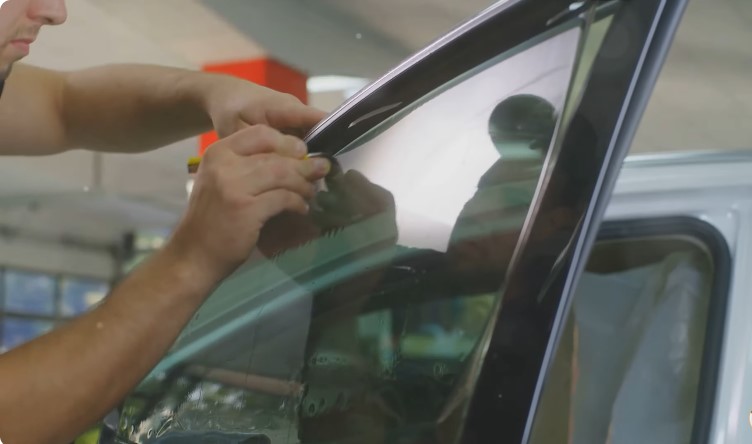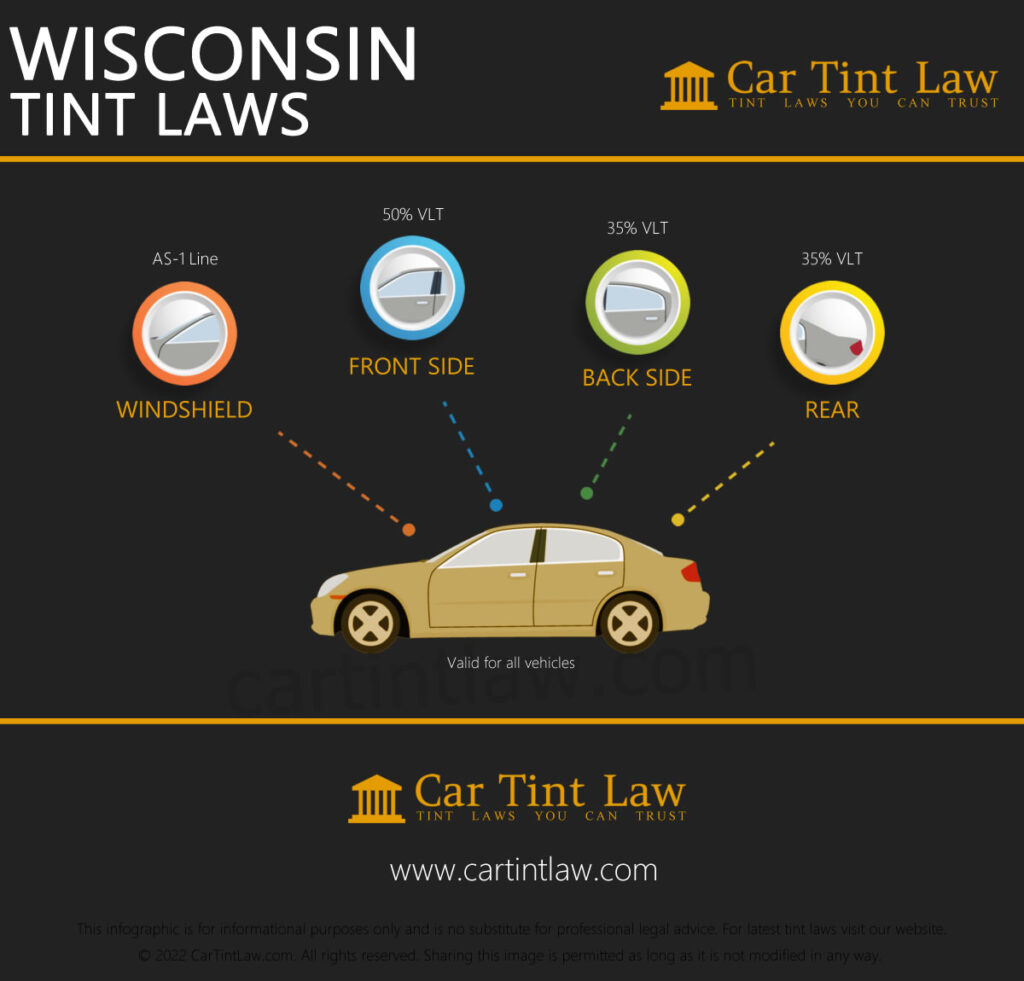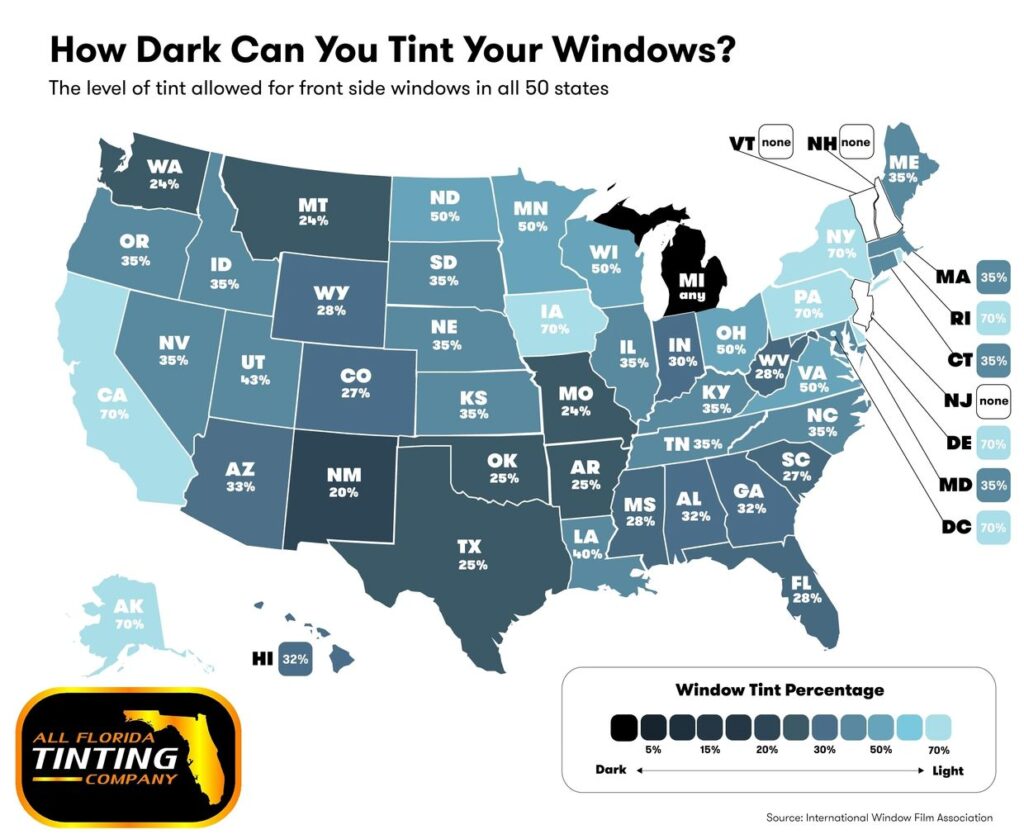As an Amazon Associate, I earn from qualifying purchases
If you live in Texas and want to tint your car windows, you need to know the law. The state has clear rules on how dark and reflective your window tint can be. If you do not follow these rules, you might get a fine. This guide will help you understand Texas window tinting laws in simple words. Window tinting makes your car look stylish and protects you from the sun. But too much tint can be dangerous. Police officers must see inside the car for safety reasons. That is why Texas has strict rules about window tint.
This article explains the legal limits of tint darkness and reflection. It also covers other important rules. Read carefully to avoid trouble and fines.

1. Window Tint Darkness in Texas (VLT)
What is VLT?
VLT stands for Visible Light Transmission. It is the amount of light that can pass through your tinted window. The number is in percentage (%). A higher VLT means more light can pass through. A lower VLT means the window is darker.
Texas has different VLT rules for different types of vehicles. Your car is either a passenger vehicle (sedan) or a multi-purpose vehicle (SUV or van).
Tint Darkness Law for Passenger Vehicles (Sedans) in Texas:
- Windshield: You can have a tint on the top 5 inches of the windshield, but it must let in at least 25% of light (VLT 25%). It must not reflect more than 25% of light.
- Front Side Windows: The tint must let in at least 25% of light (VLT 25%).
- Back Side Windows: You can use any tint darkness.
- Rear Window: You can use any tint darkness if you have side mirrors. If you do not have side mirrors, you must use at least 25% VLT.
Tint Darkness Law for Multi-Purpose Vehicles (SUVs and Vans) in Texas:
- Windshield: You can have a tint on the top 5 inches of the windshield, but it must let in at least 25% of light (VLT 25%). It must not reflect more than 25% of light.
- Front Side Windows: The tint must let in at least 25% of light (VLT 25%).
- Back Side Windows: You can use any tint darkness.
- Rear Window: You can use any tint darkness if you have side mirrors. If you do not have side mirrors, you must use at least 25% VLT.

2. Window Tint Reflection in Texas (VLR)
What is VLR?
VLR stands for Visible Light Reflection. It measures how much light is reflected by the window tint. A lower percentage means less reflection. A high reflection can make it hard for other drivers to see.
Texas has clear rules for tint reflection. The laws are the same for passenger and multi-purpose vehicles.
Tint Reflection Law for All Vehicles:
- Front Side Windows: The tint must not reflect more than 25% of light.
- Back Side Windows: The tint must not reflect more than 25% of light.
Too much reflection can make your windows look like mirrors. This is dangerous for other drivers.
3. Other Texas Window Tint Rules and Regulations
Besides VLT and VLR, Texas has other important rules you must follow:
- Side Mirrors: If you have tinted rear windows, your car must have dual side mirrors for safety.
- Restricted Colors: Texas does not allow red, blue, or amber tint on windshields.
- Certification: Tint film manufacturers must certify their products for use in Texas.
- Stickers: A sticker proving legal tint must be placed on the driver’s side window.
- Medical Exemptions: Some people with medical conditions can get special permission for a darker tint.
Breaking these rules can result in fines. First-time offenders may pay $20 to $25, while repeat violations can cost up to $275.
4. Frequently Asked Questions (FAQs)
1. Can I get a darker tint for medical reasons?
Yes, Texas allows medical exemptions for window tint. You must provide medical proof and apply for approval.
2. What happens if I use illegal tint?
If your tint does not follow Texas laws, you may get a fine between $20 and $275.
3. Can I use any color tint on my car windows?
No, Texas bans red, blue, and amber tint on windshields.
4. Do I need a sticker for my tint?
Yes, a legal tint sticker must be placed on the driver’s side window.
5. What if my car was tinted in another state?
If you bring a tinted car from another state, it must still follow Texas tint laws.
Conclusion
Window tinting in Texas is allowed, but it has strict rules. The state controls how dark and reflective the tint can be. Passenger and multi-purpose vehicles have similar rules, with minor differences.
To avoid fines, ensure your tint follows Texas laws. If you need a darker tint for medical reasons, apply for an exemption. Always check if your tint meets state regulations before installing it.
By following these guidelines, you can enjoy the benefits of window tinting without legal trouble.
As an Amazon Associate, I earn from qualifying purchases


